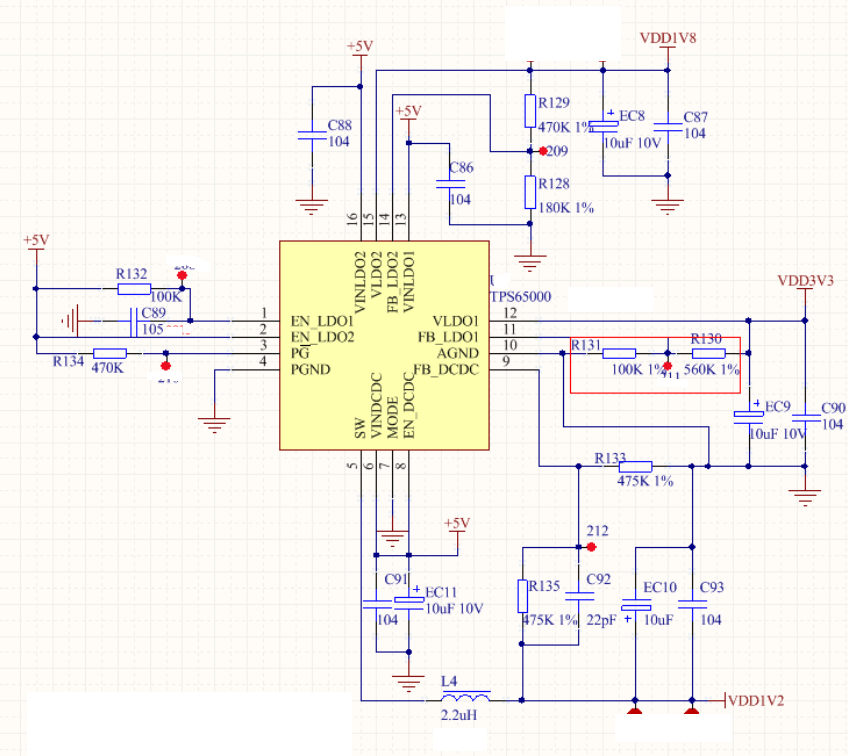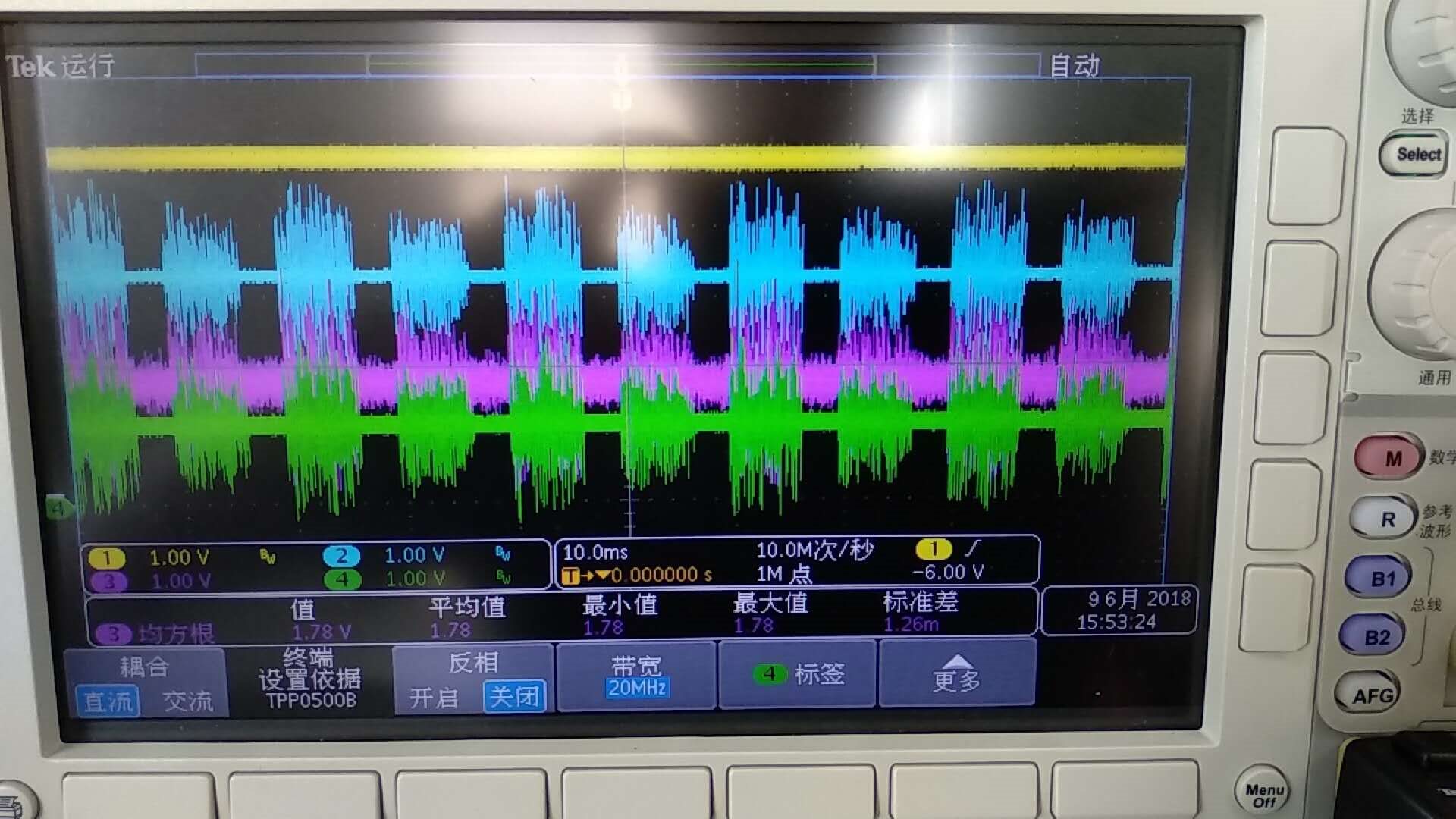hi,
I used TPS65000 in MCU's power supply application have damage issue.
My MCU's time sequence is 1.2V-->1.8V-->3.3V
so, I used TPS65000 to provide my MCU's power supply. the schematic as below:
MCU's recorder through connect P5 to MCU, I has measure GPIO voltage is 3.5V.
but the IC was damage in MCU burning record, I have some question as below:
1. Is it a risk that the En_DCDC, En_LDO1, and En_LDO2 of the TPS65000 are directly connected to Vin 5V?
2. Can LDO1 delay the effect of DCDC and LDO2 power up by adding a RC circuit to En_LDO1?
3. Will the emulator's GPIO 3.5V produce voltage inversion after the 3.3V of the control board is generated. Damage to LDO1?
4. Is TPS65000 have OCP protection function?
Btw, my out waveform as below:
CH1=Vin, CH2=3.3V, CH3=1.8V, CH4=1.2V.
What is the cause of this?
thanks.





